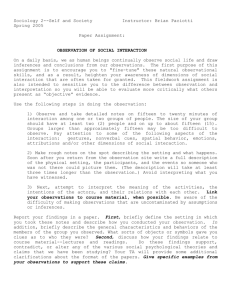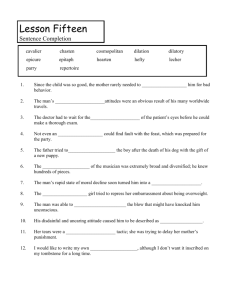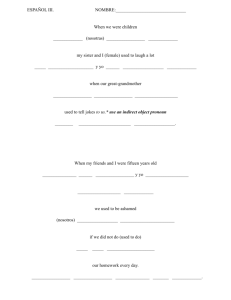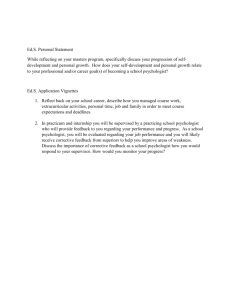AP Statistics Name: Chapter 13 – Experimental Design WS #1 Date
advertisement
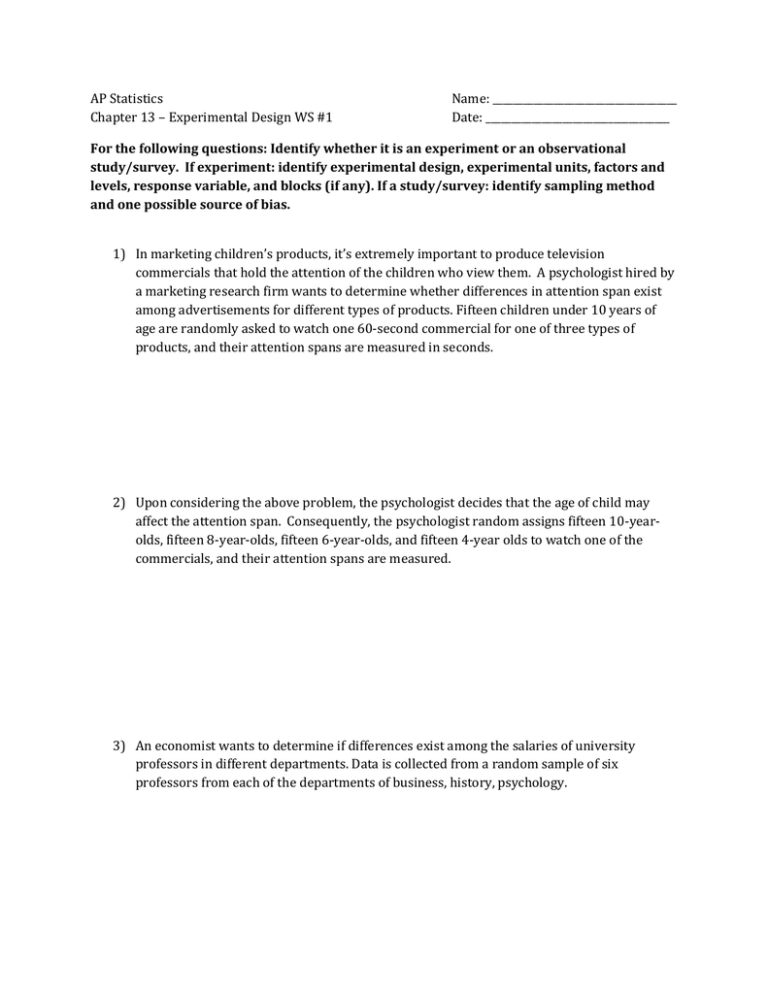
AP Statistics Chapter 13 – Experimental Design WS #1 Name: ____________________________________ Date: ____________________________________ For the following questions: Identify whether it is an experiment or an observational study/survey. If experiment: identify experimental design, experimental units, factors and levels, response variable, and blocks (if any). If a study/survey: identify sampling method and one possible source of bias. 1) In marketing children’s products, it’s extremely important to produce television commercials that hold the attention of the children who view them. A psychologist hired by a marketing research firm wants to determine whether differences in attention span exist among advertisements for different types of products. Fifteen children under 10 years of age are randomly asked to watch one 60-second commercial for one of three types of products, and their attention spans are measured in seconds. 2) Upon considering the above problem, the psychologist decides that the age of child may affect the attention span. Consequently, the psychologist random assigns fifteen 10-yearolds, fifteen 8-year-olds, fifteen 6-year-olds, and fifteen 4-year olds to watch one of the commercials, and their attention spans are measured. 3) An economist wants to determine if differences exist among the salaries of university professors in different departments. Data is collected from a random sample of six professors from each of the departments of business, history, psychology. 4) The editor of the student newspaper was in the process of making some major changes in the newspaper’s layout. He was also contemplating changing the typeface of the print used To help him make a decision, he aside six individuals to read four newspaper pages, with each page printed in a different type face. If the reading spread differed, then the typeface that was the fastest would be used. However, if there was not enough evidence to allow the editor to conclude that such differences existed, the current typeface would be continued. (Where should randomization be implemented?) 5) For many years automobile insurance companies have charged young men higher premiums, reflecting this group’s relatively poor driving record. An executive in the insurance industry believes that different premiums should be charged according to age for all drivers, because drivers in some age groups drive considerably more than others. To examine this issue 50 young (25-to-40 year olds), 50 middle-age (40-to-55 years old) drivers were questioned concerning the number of miles they drove in the previous 12 months. 6) In a recent report, a group of scientists claimed that Americans are consuming an excessive amount of selenium in their diets. The National Science Foundation has state that the safe upper limit is 200 micrograms per day. In order to determine the extent of the problem in Plano, researchers divided the town into five regions based on economic levels and drew random samples of households from each region. They then interviewed an adult at the residences and measured their daily consumption of selenium. 7) A mathematics education researcher was interested in determining the effects of class size (small, medium, and large) and the use of a traditional statistics textbook versus a new pilot textbook. The researcher conducted her own experiment, assigning each combination of class size and type of textbook to two classes at teach of five chosen schools. The average final grade for the class was then recorded at the end of the year. a. What are the factors? b. What are the treatments? c. What are the experimental units? d. What is the response variable? 8) A botanist was interested in determining the effects of scheduled watering (three days a week or daily) and the use of fertilizer (no fertilizer, traditional, and organic) in hopes of increasing the heat rating of jalapeno peppers. The botanist conducted his own experiment, assigning each combination of watering schedule and type of fertilizer to three plots at each of four chosen locations that had similar soli and full sun. The average heat rating for the plot was recorded at the end of the growing season. a. What are the factors? What are the levels? b. What are the treatments? c. What are the experimental units? d. What is the response variable? 9) A new dog food, specially designed for dogs with kidney problems, has been developed. A veterinarian wants to test this new food against another dog food currently on the market to see if it improves the dog’s health. Thirty dogs with kidney problems were recruited to participate in the study. They were fed either the “new” or “old” food for six months and the improvement in kidney health was rated. 10) Does talking while walking slow you down? In a study reported in the journal Physical Therapy, the cadence was measured for subjects who were walking (using no device, a standard walker, or rolling walker) and required (or not required) to respond to a signal while walking. a. What is/are the explanatory variable(s) or factor(s) and their levels? b. What is the response variable? c. How many treatment groups are there? 11) Researchers have developed new insulin inhaler to replace daily insulin shots needed by patients with diabetes. Design an experiment to test the effects of this new insulin treatment on a volunteer group of 100 diabetes patients. a. What is/are the explanatory variable(s) or factor(s) and their levels? b. What is the response variable? c. How many treatment groups are there? 12) Can the experiment in question 5 be blinded? Explain. 13) An agricultural researcher is interested in finding out the effect of three different fertilizers on a certain variety of corn. Design an experiment to test this. What types of things could be considered confounding variables?
